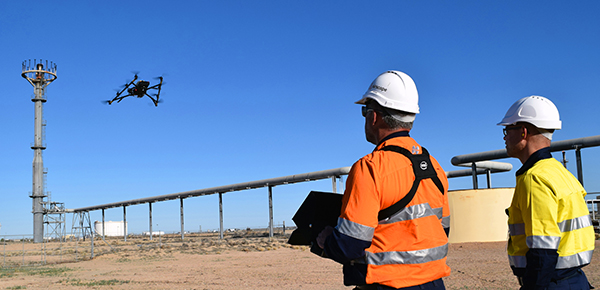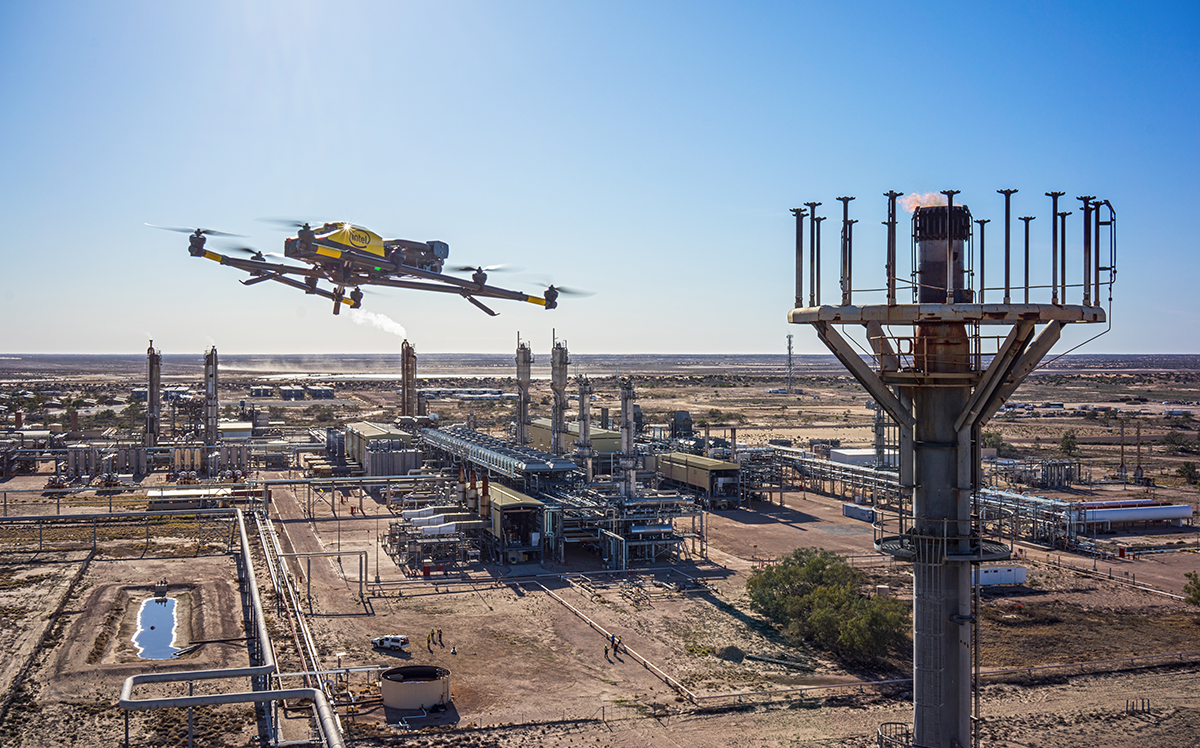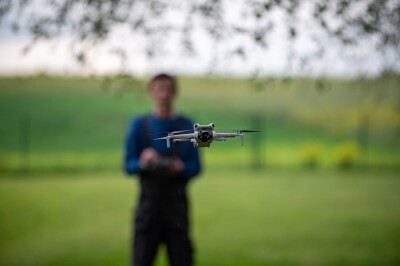"Real efficiencies and return on investment for the client come from providing a digital 3-D representation of their physical assets."
That's a quote from Chris Leslie, Director at
Airscope, and it's one of the best summations of a specific way in which professionals are using drones to make a real difference. It’s an important distinction because just talking about the potential of this technology is no longer enough. Today, it’s all about results, and the Airscope team has been able to calculate and quantify some pretty impressive ones.
What makes Airscope different from some of the other service providers that have been touting the benefits of the technology is that they view it in a holistic manner. They've recognized that while drones have excelled in aerial photogrammetry, that information is only being captured from one perspective. It's only when drone data is combined with traditional terrestrial methods of data capture that the company can derive the real value of the technology, and allows the Perth, Australia-based inspections and asset visualization company to offer mm accuracy across entire facilities.
That information and accuracy isn't just about raw data or information though. To derive the real value of this technology, organizational challenges need to be addressed, and the application or deliverable needs to solve a defined problem. Using the Intel Falcon 8+ system, Airscope has been able to define day-to-day cost reductions of between 3.6 and 10%, with capital works projects being reduced by more than 20 percent. It’s a process that has allowed the Airscope team to "bring the field into the boardroom", but that's a concept which is about much more than assets and information.
"When we say 'to bring the field into the boardroom' we are really talking about creating digital twins of complete physical facilities," Leslie told Commercial UAV News. "A digital twin of a facility is when a digital replica of a physical asset is created with mm accuracy and is connected to company data with a steady stream of data flowing from fixed sensors, therefore reflecting the real-time status of the asset. Operators are also able to look at historical information as well as run simulations on future activities. This allows decision-makers and teams to make informed and accurate decisions on real assets in a transparent, visual and collaborative manner without having to spend money and time mobilizing to the facility."

This approach is all about addressing three critical questions that Leslie has been able to identify as most organizations’ big problems:
- What assets have we got out there?
- What state are these assets in?
- Which one is going to fail first; and what do we do to fix this?
Being able to capture and provide information that would allow Leslie to help his clients find these answers required him to utilize the right piece of technology, and he mentioned that the Intel Falcon 8+ system was the only aircraft which met their expectations, for its reliability, stability and true 3-D modeling capabilities. Not surprisingly, the way in which Airscope deployed the Intel solution is exactly what the Intel Falcon 8+ system was built for, and that was something Anil Nanduri, Vice President and General Manager of the Drone Group at Intel, discussed further.
"The Intel Falcon 8+ system was designed with safety in mind and with redundancies built in so that there would not be a single point of failure," Nanduri mentioned. "The Intel Falcon 8+ drone was also designed to withstand windy conditions and the advanced flight performance is able to accommodate shifts in center of gravity to maintain position. We offer high-resolution payloads to detect the finest detail as well as an inspection payload that offers simultaneous RGB and thermal imaging. And finally, the accuracy and precision of the data capture was what was important to Airscope. They analyzed 37 other drones and compared the flight plan to the actual flight and the Intel Falcon 8+ successfully achieved every waypoint."
Much of that success was about using a tool that could gather the necessary type and kind of information, but the true differentiator is about what it means to utilize this intelligence for oil & gas facilities in the present and future. There is tremendous value associated with being able to understand the current state of assets, but being able to answer questions like “when is this going to fail?” opens up an entirely new value proposition.
The amount of data required to address issues related to preventative maintenance has kept many from exploring this topic, but around-the-clock access to a full model of a plant on the Airscope Visualize platform has opened up real opportunities. All of that is being fueled by the information being gathered in part by drones, but it’s the systems and processes that create the real value.
"Airscope Visualize is a very powerful tool for enterprise businesses managing large remote infrastructure as teams now have increased visibility of their assets, enhanced intra-company collaboration and the ability to digest more data in a more efficient manner," Leslie continued. "The infrastructure Airscope digitizes are generally the assets that produce a company’s revenue, and production output is extremely important where downtime and lost production can cost companies millions per day. Being able to identify an issue before it turns into a problem is a big challenge for most organisations.”
One of the reasons that is such a big problem is because it’s hard to calculate the costs around something that didn’t happen, and these difficulties also play into estimates that are usually too conservative around when something is getting to the “end of life” stage, which can cost companies just as much due to running more maintenance campaigns. Drones are gathering information that can help with these calculations and estimates, but automation is going to be essential for organizations that want to act in a safe and timely manner.
Automation is something that Intel has been focused on for a long time now, as they recognized that operators of all types have struggled when it comes to transitioning data into information that allows them to take action, but the automation they want to enable goes beyond data. The company has talked about a greater focus on automation of both the data capture and data analysis, which will unlock the ability for greater analyses and inference of large data sets that will be captured entirely by drones.
"Currently, it takes an experienced commercial UAV pilot to safely operate a drone to execute a survey, mapping and inspection mission," said Nanduri. "And once the data is captured during the flight, the data would need to be processed by somebody with that knowledge and experience. The Intel Mission Control flight planning software and
Intel Insight Platform are software and services applications that will make both the data capture and the data analyses process more automated, making the technology easier to use and accessible to more people. It is our vision that once a flight is planned, the operator could push a button and the drone would execute the flight as planned. Once the data is uploaded into the cloud, Intel Insight platform will automatically do the data analyses and processing, and provide reports to the client."
These capabilities will allow companies like Airscope to take the next step in terms of delivering value to their clients, but it's important to remember they didn't start in this position. It's a journey Airscope has been on for many years, and their initial approach saw them provide a solution that didn't solve any business problems for their clients. The challenges they encountered were numerous and required them to redefine their business to speak to the specifics associated with the three questions mentioned above
With that being the case, what would Leslie say to someone who said they aren’t convinced that drones can make enough of a bottom line difference to justify the logistics and costs that it would take to properly adopt the technology?
"I would tell them that they aren’t asking the right questions," Leslie concluded.
 This approach is all about addressing three critical questions that Leslie has been able to identify as most organizations’ big problems:
This approach is all about addressing three critical questions that Leslie has been able to identify as most organizations’ big problems:














Comments